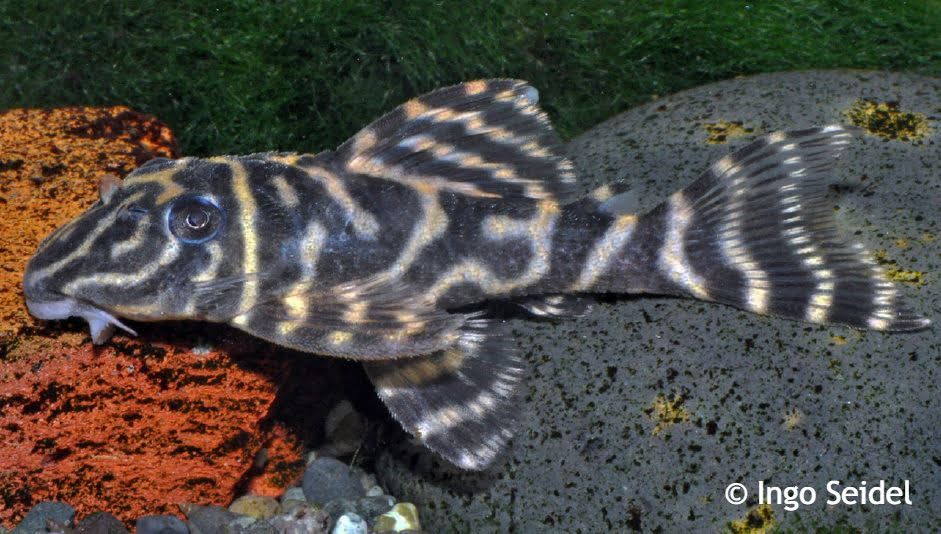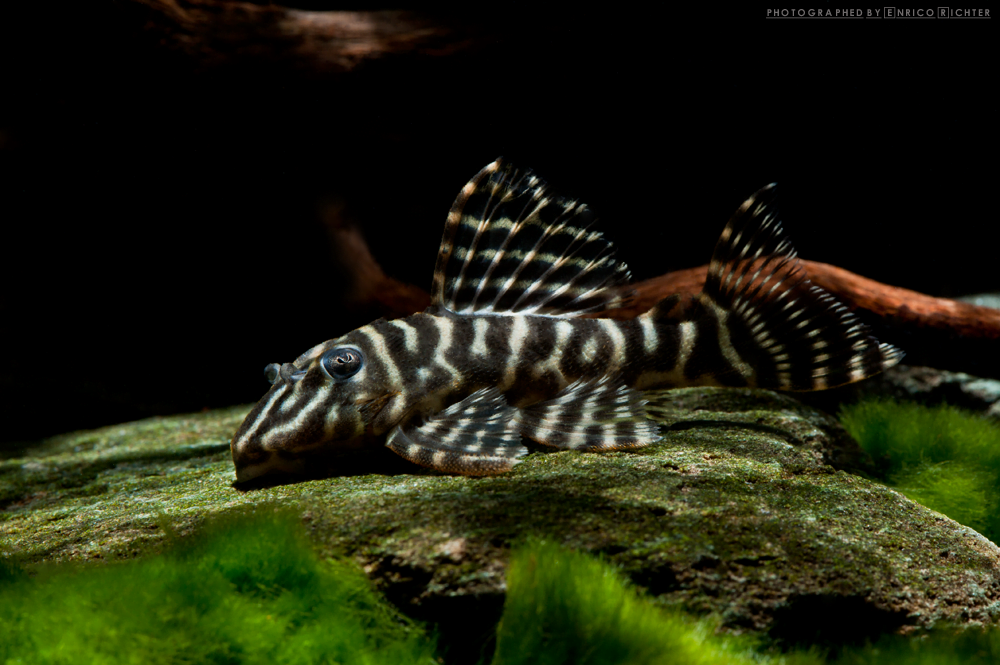



L129 is one of the more common Hypancistrus species in the hobby. This is certainly due to its low price compared to many of the Brazilian forms, as well as it’s availability from Colombian exporters. It’s often confused with L340, which it’s even exported together with. As an aquarium fish, L129 is easy to care for if given warm, clean water. They will usually thrive even in community tanks, if normal proper care is provided. Their markings can vary a lot both in pattern and contrast, but especially juveniles can show a very appealing striped pattern. H.debilittera has the most northern distribution in South America of the genus.
Facts:
Name: Hypancistrus debilittera (Armbruster, Lujan & Taphorn, 2007)
Trade names: L129
Origin: Rio Bita, Rio Meta, Colombia.
Maximum size: 10 cm / 4”
L129 is very similar to L340. They can be told apart by the number of teeth in the lower jaw; L340 has the lowest number of teeth in the lower jaw of any Hypancistrus (2-6 on each side). L340 is also usually more rust-red or orange in its base colour compared to the more yellow/grey L129. There’s also a slight difference in body shape; L340 is a couple of centimetres smaller than L129. In pattern the two forms can’t be separated. It should come as no surprise that further forms of the H.debilittera-complex have been found elsewhere in the Orinoco-system. L454 is a blackwater type from Rio Atabapo with bigger eyes and larger adult size, and L474 is a form from Rio Sinaruco in Venezuela with a higher number of teeth in the upper jaw. We can expect further forms to be discovered in the future.
All these forms probably belong to the same species, H.debilittera. They are different populations, separated by natural borders which the populations don’t cross. Over time they have developed certain traits to adapt to their habitat, which explains the differences in teeth, pattern, eyes and maximum size. As responsible fishkeepers we should aim to keep these forms separated in our aquariums to avoid crossbreeding.
They need an aquarium set up consisting of lots of hiding places in the form of rocks, wood and of course specially made caves that suit their measurements. In these the males will eventually guard their offspring. They prefer water that is warm (26-30 C), soft and slightly acidic. Most of all it should be well oxygenated and clean, so a good filtration system and frequent water changes are essential. Among themselves they are peaceful, although males may quarrel for caves and females can sometimes be badly injured or even killed during the breeding-trapping in the male’s cave. Males develop longer odontodes on their pectoral fins and on their cheeks and have broader heads. Hypancistrus are mostly carnivorous, so a selection of crustaceans, insect larvae and fish meat should be offered along with high quality dried foods that also contain some vegetable matter.
More info:
